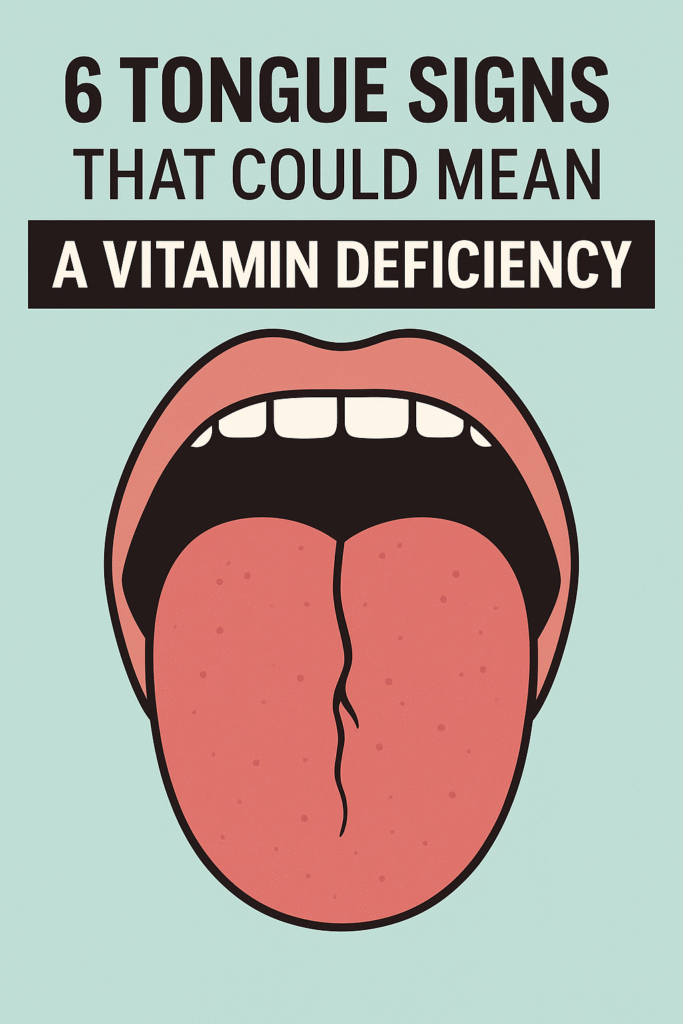⚠️ Affiliate Disclaimer: This post may contain affiliate links, which means I may earn a small commission — at no extra cost to you — if you make a purchase through one of these links. I only recommend products or services I genuinely trust and believe can provide value. Thank you for supporting My Medical Muse!
10 Powerful Ways to Tell If Shortness of Breath Is Caused by Heart vs Asthma
Shortness of breath is one of the most unsettling sensations a person can experience. Whether it strikes suddenly or creeps up gradually, that terrifying feeling of not getting enough air can cause panic, fear, and helplessness.
Two of the most common culprits behind breathlessness are heart problems and asthma, conditions that may seem unrelated but often mimic each other, both can make you feel winded, fatigued, or tight-chested, yet the underlying causes and the treatments are vastly different.
Understanding which system is at fault, your heart or your lungs, isn’t just about comfort, it could literally save your life. A heart-related cause demands urgent cardiac management, while asthma requires airway-specific treatment.
In this detailed guide, we’ll explore 10 powerful ways to tell whether your shortness of breath is caused by your heart or your lungs. We’ll unpack the subtle signs, timing patterns, physical clues, and diagnostic hints that help separate these two often-confused conditions and what you should do next.
1. Understand How Each Condition Affects Breathing
Before identifying the differences, it’s vital to understand what’s actually happening inside your body when you feel short of breath. Though both your heart and lungs are part of the oxygen supply system, they play very different roles and dysfunction in either can make breathing feel impossible.
Heart-Related Shortness of Breath (Cardiac Dyspnea)
The heart is your body’s central pump, its main job is to deliver oxygen-rich blood to every organ, tissue, and muscle. When the heart becomes weakened, because of heart failure, coronary artery disease, valve problems, or abnormal rhythms (arrhythmias) , it can’t circulate blood effectively.
This inefficiency causes fluid to back up into the lungs, leading to congestion and less oxygen exchange. You might feel like you can’t catch your breath, especially:
- During physical activity, such as climbing stairs or walking briskly.
- When lying flat, because fluid redistributes into the lungs.
- At night, when fluid accumulation worsens and you wake up gasping for air.
This type of shortness of breath, called cardiac dyspnea, often improves when you sit upright, because gravity helps drain some of that fluid away from the lungs.
In essence, your lungs are healthy, but your heart can’t keep up with the oxygen demand.
Asthma-Related Shortness of Breath (Bronchial Dyspnea)
Asthma, on the other hand, is a chronic inflammatory condition of the airways, not the heart. When you inhale irritants or encounter a trigger such as dust, pollen, cold air, smoke, or emotional stress, the bronchial tubes inside your lungs become narrow, swollen, and filled with mucus.
This airway constriction limits airflow, making it hard to breathe out fully. You may notice:
- Wheezing or whistling sounds when exhaling.
- Chest tightness or pressure.
- Sudden, unpredictable attacks of shortness of breath.
Unlike cardiac breathlessness, asthma-related shortness of breath is caused by blocked air movement, not poor oxygen circulation. It often improves quickly with inhalers or bronchodilators, which open the airways.
In Short, heart problems interfere with how oxygen is delivered through your bloodstream, asthma interferes with how air moves in and out of your lungs, both cause breathlessness, but for entirely different reasons. Recognizing which one applies to you is the first and most important step toward the right treatment.
2. Timing and Triggers of Shortness of Breath
The timing of your symptoms and what brings them on can reveal powerful clues about the underlying cause. Pay attention to when you feel short of breath and what makes it worse or better.
Here’s how the two differ:
Heart-Related Breathlessness
When your heart struggles to pump efficiently, oxygen circulation drops and your breathing pattern reflects that.
You may notice:
- Worsening breathlessness during physical activity. Even mild exertion, such as climbing stairs, walking briskly, or bending over, can make you feel winded. The heart simply can’t deliver oxygen fast enough to meet the body’s needs.
- Breathlessness after lying flat (orthopnea). This happens because fluid from your lower body shifts toward the lungs when you recline, making it harder to breathe. Many people find relief by sleeping propped up on extra pillows.
- Sudden nighttime attacks of breathlessness (paroxysmal nocturnal dyspnea). You may wake up gasping for air a few hours after falling asleep. Sitting or standing up often brings quick relief.
Heart-related shortness of breath tends to build gradually and worsens with physical effort or body position. It rarely improves on its own and often signals underlying heart failure or fluid retention in the lungs.
Asthma-Related Breathlessness
Asthma behaves very differently. It’s typically episodic meaning it comes and goes and is triggered by environmental or physical factors that irritate your airways.
Common triggers include:
- Allergens: Dust, pet dander, mold, or pollen.
- Cold or dry air: Especially during winter or early mornings.
- Irritants: Cigarette smoke, fumes, or strong odors.
- Exercise: Especially high-intensity activities without proper warm-up.
- Emotional stress: Anxiety or panic can tighten the airways and worsen symptoms.
Asthma attacks can appear suddenly and often improve after using a rescue inhaler, between episodes, you may feel completely normal. This on-and-off pattern contrasts sharply with heart-related breathlessness, which is typically constant or progressive.
Another key difference, asthma-related shortness of breath often occurs in younger individuals or those with a history of allergies, eczema, or hay fever, while heart-related breathlessness is more common in middle-aged and older adults with cardiovascular risk factors.
Summary of Key Differences
Feature | Heart-Related Breathlessness | Asthma-Related Breathlessness |
Timing | Gradual, persistent, worse at night or when lying down | Sudden, episodic, often triggered by allergens or exertion |
Relief | Improves when sitting or standing upright | Improves quickly with inhaler use |
Common Age Group | Adults over 40 with heart risk factors | Children, teens, or adults with allergies |
Associated Symptoms | Swelling, fatigue, chest pressure | Wheezing, coughing, chest tightness |
If your shortness of breath intensifies after physical exertion or lying flat, the heart is the likely suspect, but if it’s triggered by dusty rooms, exercise, cold air, or emotional stress, asthma is more probable.
3. Type of Cough Accompanying the Breathlessness
A cough is often your body’s way of signaling that something isn’t right with your lungs or, in some cases, your heart, both asthma and heart conditions can cause coughing, but the sound, texture, and timing of that cough offer important clues.
Asthma Cough
An asthma-related cough is typically dry, hacking, and persistent, and it’s frequently accompanied by wheezing, that high-pitched whistle when you breathe out.
You’ll likely notice:
- It worsens at night or early in the morning, when the airways are naturally more reactive.
- It’s triggered by allergens, cold air, exercise, or exposure to irritants.
- It’s caused by airway inflammation and constriction, not fluid buildup.
Because asthma affects the air passages directly, the cough results from irritation of the bronchial walls rather than congestion. If you use a bronchodilator inhaler, your cough usually improves within minutes.
Heart Cough (Cardiac Cough)
A heart-related cough, sometimes called a cardiac cough, happens for completely different reasons. When the heart weakens, it can’t pump blood efficiently. This causes fluid to leak into the lungs, leading to congestion and a wet, sometimes frothy cough.
Signs of a cardiac cough include:
- Moist, bubbling, or frothy sputum sometimes pink-tinged due to tiny amounts of blood from fluid overload.
- A crackling or gurgling sound when you breathe.
- Coughing that worsens when lying flat and improves when sitting up.
This type of cough is common in congestive heart failure (CHF) and is often accompanied by other heart symptoms like leg swelling, fatigue, and breathlessness at rest. If you ever cough up pink, frothy mucus or experience sudden breathlessness with chest pressure, seek emergency medical care immediately. These can be signs of acute heart failure or pulmonary edema, both life-threatening conditions.
4. The Nature of Wheezing
Wheezing, that musical, whistling noise when breathing is often seen as the hallmark of asthma, but it’s not always caused by lung inflammation. The pattern, response to treatment, and accompanying signs can help you identify its true source.
Asthmatic Wheeze
- High-pitched and most noticeable when exhaling.
- Caused by narrowed, inflamed airways.
- Usually improves with bronchodilators (inhalers).
- Often triggered by allergens, cold air, or exercise.
Asthma wheezing typically comes in episodes, during attacks or after exposure to triggers and fades with medication or rest.
Heart-Related Wheeze (Cardiac Asthma)
The term cardiac asthma might sound confusing, but it refers to wheezing caused by heart failure, not lung inflammation. In this case, the wheeze results from fluid accumulation in the lungs not airway spasm.
You might notice:
- Wheezing that’s accompanied by a wet cough or crackling chest sounds.
- Little or no improvement after using an inhaler.
- Swelling in your legs or ankles, a key sign of fluid overload.
If your wheezing doesn’t respond to asthma medication, or if it’s paired with swelling and fatigue, it’s likely cardiac in nature.
Asthma wheeze caused by airway constriction.
Heart wheeze, caused by fluid in lungs.
5. Associated Chest Discomfort
Chest discomfort is another shared symptom but the quality, pattern, and accompanying sensations differ significantly between heart and asthma causes.
Heart-Related Chest Discomfort
- Feels like tightness, heaviness, or squeezing pressure in the center or left side of the chest.
- May radiate to the arm, jaw, neck, or back.
- Often triggered by physical activity or emotional stress and relieved by rest, the classic pattern of angina.
- Can be accompanied by sweating, nausea, lightheadedness, or palpitations.
These sensations stem from reduced blood flow to the heart muscle. If ignored, they can progress to a heart attack.
Asthma-Related Chest Discomfort
- Feels more like pressure or tightness deep inside the chest, not true “pain.”
- Usually occurs during or before an asthma attack.
- Caused by trapped air and muscle tightening around the airways.
- Improves after using an inhaler or relaxing breathing exercises.
If your chest feels constricted and it eases after inhaler use, it’s likely asthma, but if you experience radiating chest pain with exertion or sweating, it’s time to see a doctor, fast.
6. Look for Fluid Retention and Swelling
This is one of the clearest signs that your shortness of breath is heart-related, not asthma. When the heart weakens, blood flow slows, and fluid starts collecting in tissues, especially in the lower body.
Heart Issues (Congestive Heart Failure Signs)
- Swelling (edema) in the ankles, feet, legs, or abdomen.
- Sudden weight gain over a few days (from fluid buildup, not fat).
- Feeling bloated or full quickly after small meals.
- Indentations on your skin when pressing on swollen areas (pitting edema).
This swelling results from the heart’s inability to pump blood efficiently, causing fluids to pool in tissues and the lungs.
Asthma
Asthma doesn’t cause swelling. Its effects are localized to the airways, no water retention, weight gain, or bloating.
So, if you notice swollen ankles, unexpected weight gain, or puffiness in your lower limbs, your shortness of breath is far more likely to be cardiac in nature.
7. Response to Medication or Treatment
How your body reacts to treatment is a strong diagnostic clue. Because asthma and heart failure respond to entirely different therapies, your response (or lack thereof) can help pinpoint the source of the problem.
Asthma
- Symptoms often improve within minutes of using a bronchodilator (e.g., albuterol).
- Long-term control comes from inhaled corticosteroids that reduce airway inflammation.
- Oxygen levels usually normalize quickly once the airways open up.
If your breathing improves noticeably after inhaler use, it strongly points toward asthma.
Heart Conditions
- Asthma medications don’t help or may even make symptoms worse by increasing heart rate.
- Relief comes from heart-specific treatments like:
- Diuretics, which remove excess fluid.
- ACE inhibitors or beta-blockers, which improve heart function.
- Oxygen therapy, to aid gas exchange.
- Diuretics, which remove excess fluid.
If puffing on an inhaler doesn’t help but lying upright, taking prescribed heart medication, or reducing salt intake does, your breathlessness is likely cardiac.
8. Age and Medical History Matter
Your age, background, and existing health conditions provide valuable context for understanding the cause of shortness of breath.
Heart-Related Shortness of Breath
- More common in adults over 40 or 50.
- Often associated with high blood pressure, diabetes, obesity, smoking, or a family history of heart disease.
- Can appear suddenly after years of silent cardiovascular strain.
Many people with heart-related breathlessness also experience other subtle signs like fatigue, swollen legs, or reduced stamina, long before they’re diagnosed with heart failure.
Asthma-Related Shortness of Breath
- Typically begins in childhood or young adulthood, although adult-onset asthma is also possible.
- Often linked to allergies, eczema, hay fever, or other immune sensitivities.
- Symptoms are episodic, meaning you feel fine between attacks.
If you’ve had asthma or allergies since youth, your breathlessness may be airway-related. But if you’re older, sedentary, or have long-standing cardiovascular risk factors, your heart deserves investigation first.
9. Diagnostic Tests That Differentiate the Two
Doctors use several tests to identify the true cause of breathlessness:
For Heart-Related Causes:
- ECG (Electrocardiogram): Detects rhythm issues or past heart attacks.
- Echocardiogram: Shows how well the heart pumps blood.
- BNP Blood Test: Measures a hormone that rises in heart failure.
- Chest X-Ray: May reveal fluid buildup.
For Asthma:
- Spirometry: Measures airflow and lung capacity.
- Peak Flow Test: Monitors how fast you can exhale.
- Allergy Testing: Identifies possible triggers.
- Methacholine Challenge: Confirms airway sensitivity.
A combination of these tests provides a clear answer, especially when symptoms overlap.
10. The Pattern of Fatigue and Exercise Tolerance
Lastly, pay attention to how your energy levels change.
Heart-Related Breathlessness:
- Comes with fatigue, weakness, and reduced stamina.
- You may struggle with routine tasks like climbing stairs or walking short distances.
- Caused by poor oxygen circulation and heart strain.
- Comes with fatigue, weakness, and reduced stamina.
Asthma-Related Breathlessness:
- Usually episodic, you feel fine between attacks.
- Fatigue occurs mainly after an asthma episode or if your asthma is poorly controlled.
- Usually episodic, you feel fine between attacks.
Constant tiredness and breathlessness with minimal effort are classic signs of heart failure.
When to See a Doctor Immediately
Don’t guess if your shortness of breath:
- Occurs suddenly and is severe
- Comes with chest pain, dizziness, or fainting
- Causes blue lips or fingertips
- Happens at rest or during sleep
- Doesn’t improve with your regular medication
These can indicate a medical emergency, such as heart attack, severe asthma attack, or pulmonary edema. Seek immediate help.
How Doctors Pinpoint the Cause
A medical evaluation usually includes:
- Detailed symptom history (timing, triggers, duration)
- Physical examination (listening for wheezes or crackles)
- Imaging and blood work (to check heart or lung function)
Sometimes both conditions coexist, for example, a person with asthma may also develop heart failure later in life. That’s why professional diagnosis is critical.
Lifestyle Tips to Support Heart and Lung Health
Regardless of the cause, improving your overall cardiovascular and respiratory health can reduce breathlessness episodes:
For Your Heart:
- Eat heart-healthy foods (fruits, veggies, omega-3s, whole grains).
- Limit salt to reduce fluid retention.
- Stay active, aim for 30 minutes of walking most days.
- Quit smoking and manage stress.
For Your Lungs:
- Avoid triggers (dust, smoke, strong odors).
- Use a humidifier to ease breathing.
- Practice breathing exercises like pursed-lip breathing.
- Stay up to date with flu and pneumonia vaccines.
A healthy lifestyle supports both systems and prevents complications.
Final Thoughts
Shortness of breath is a warning sign you should never ignore.
While both asthma and heart conditions can make breathing difficult, the pattern, triggers, and response to treatment hold the key to telling them apart.
- If your breathlessness worsens with exertion, at night, or comes with swelling, think heart.
- If it’s triggered by allergens or cold air and improves with an inhaler, think asthma.
When in doubt, always seek medical evaluation. Early detection can save your lungs, your heart and your life.
👩⚕️ Need Personalized Health Advice?
Get expert guidance tailored to your unique health concerns through MuseCare Consult. Our licensed doctors are here to help you understand your symptoms, medications, and lab results—confidentially and affordably.
👉 Book a MuseCare Consult NowRelated Blog Post You Might Like:
- 10 Shocking Negative Effects of Energy Drinks You Must Know
- 10 Alarming Reasons Why You Wake Up at Night Short of Breath and What to Do
- Why Do I Get Diarrhea After Eating Salad? 10 Shocking Reasons You Must Know
- 10 Healthy Foods Stalling Your Weight Loss And The Smart Fixes You Need
- How to Stop Gas After Eating Beans: 12 Proven Ways to Prevent Bloating



